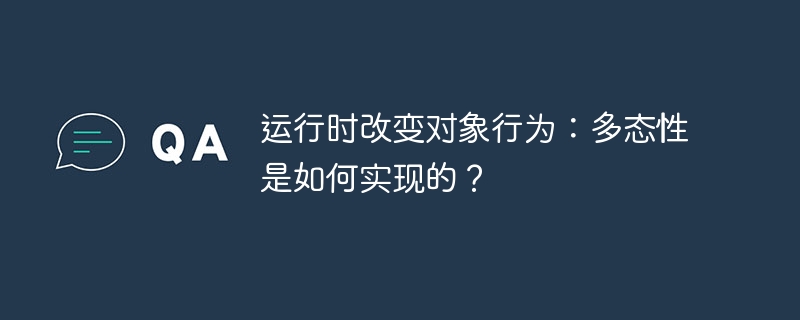运行时改变对象行为:多态性是如何实现的?

多态性的妙处:在运行时修改对象行为
多态性是面向对象编程的重要特性,它允许我们在运行时改变对象的行为,以实现代码的灵活性。
理解“多态允许我们在运行时更改对象的行为”
让我们通过一个示例来理解多态性:
// 定义一个动物接口
interface Animal {
void makeSound();
}
// 实现接口的具体类
class Dog implements Animal {
@Override
public void makeSound() {
System.out.println("汪汪");
}
}
class Cat implements Animal {
@Override
public void makeSound() {
System.out.println("喵喵");
}
}
public class Main {
public static void main(String[] args) {
Animal animal; // 声明一个 Animal 类型的变量
// 在运行时决定创建的对象类型
animal = new Dog();
animal.makeSound(); // 输出: 汪汪
animal = new Cat();
animal.makeSound(); // 输出: 喵喵
}
}在这个例子中:
- 我们定义了 animal 接口,要求实现类必须提供 makesound() 方法。
- 然后我们实现了两个具体类,dog 和 cat,它们分别提供了不同的 makesound() 实现(汪汪或喵喵)。
- 在 main 方法中,我们定义了一个 animal 类型的变量 animal,虽然它的类型是 animal,但它可以指向任何实现了 animal 接口的对象(例如 dog 或 cat)。
- 在运行时,我们可以将 animal 变量指向不同的对象(new dog() 或 new cat())。当我们调用 animal.makesound() 时,具体执行哪种行为(汪汪或喵喵)是由 animal 在运行时指向的对象决定的。
- 当 animal 指向 dog 对象时,makesound() 会输出 “汪汪”;当 animal 指向 cat 对象时,makesound() 会输出 “喵喵”。
这就是多态性带来的灵活性,它允许我们根据需要在运行时轻松地更改对象的行为。
以上就是运行时改变对象行为:多态性是如何实现的?的详细内容,更多请关注硕下网其它相关文章!
